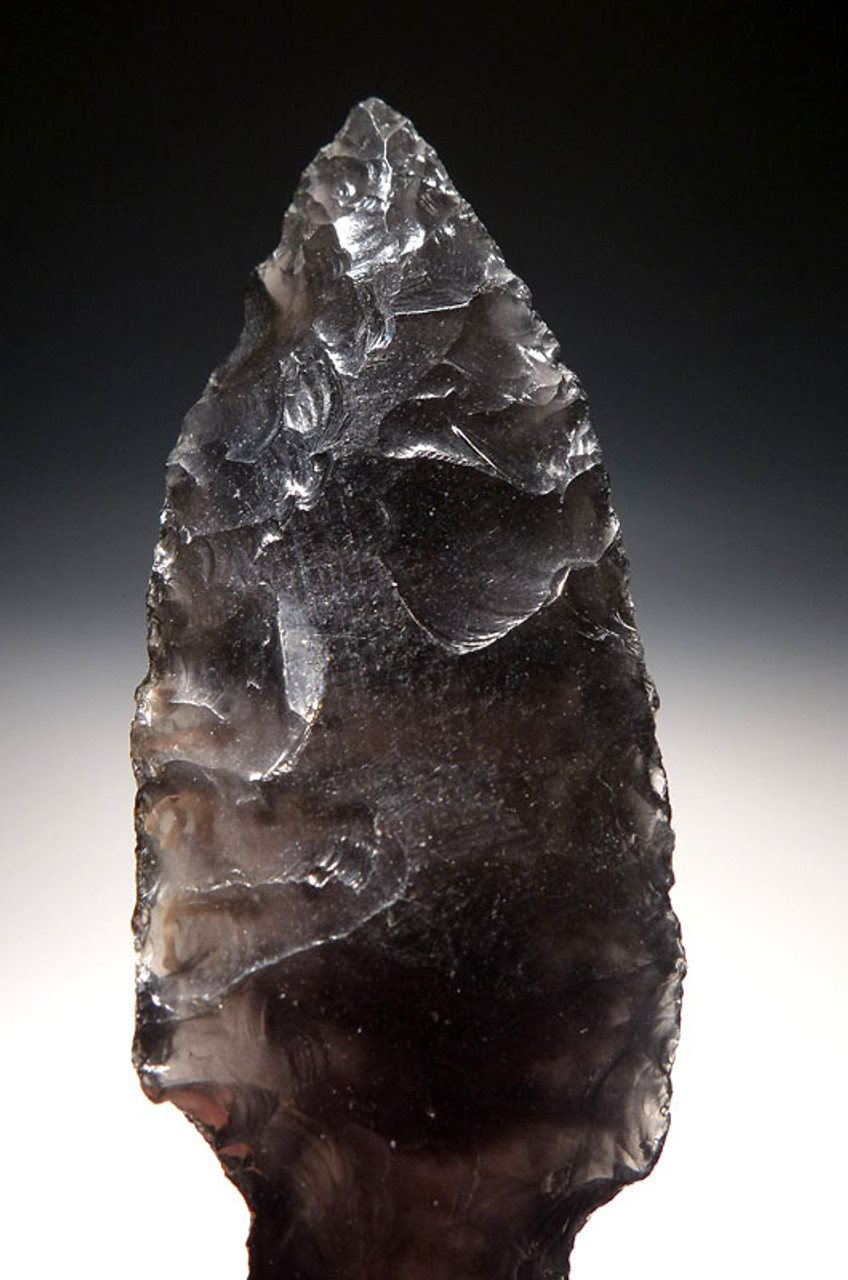Product Description
This is a well-provenanced set of TWO Pre-Columbian West Mexico Shaft-Tomb Culture TANGED BASE ARROWHEADS. They both display a design where they would have been wrapped and hafted onto a shaft. Each was masterfully fashioned out of obsidian and was found in the Lake Sayula Region of Jalisco, Mexico. The hand-written find location and date notes from Dr. Heflin are still intact on the reverse sides. This set comes from the famous Dr. Allen Heflin Collection, formed from his work in Mexico from 1946 into the 1970's.
No lithic type is more mesmerizing and flakes as beautifully as obsidian. It was so highly prized by all the Central American Pre-Columbian cultures and for good reason. The sharpest cutting edge of any substance in the world, can only be obtained with obsidian. Obsidian is unique in that it can be flaked down to one molecule in width, hence the popularity with this incredible material in Pre-Columbian weapons and tools. Even today, obsidian scalpels are still used in modern medicine throughout the world.
HISTORY
The bow and arrow was a weapon less popular than the atlatl but used in both war and hunting. The bows were made of one piece of wood, not a composite of horn, wood and sinew like the Steppe Nomads of Central Asia. The arrowheads were made from obsidian, chert, bone, or charred wood. Bow and arrows were valued differently among peoples of ancient Mexico. For example, the Tarascan were famous archers, inflicting heavy defeats on other nations with their use of metallurgy and their mastery of archery. For Chichimeca nomadic groups, living mainly by hunting, the bow was essential in their lifestyle. To the Aztec, the Tlahhuītōlli was the name of their war bow which was constructed from the wood of the tepozan tree, about five feet long and stringed with animal-sinew. Archers in the Aztec army were designated as Tequihua.
The Atlatl or Spear (Dart) Thrower was a weapon used to hurl darts called "tlacochtli" with greater force and from greater range than they could be thrown by hand. This weapon was considered by the Aztecs to be suited only for royalty and the most elite warriors in the army, and was usually depicted as being the weapon of the Gods. Murals at Teotihuacan show warriors using this effective weapon and it is characteristic of the Mesoamerican cultures of central Mexico. Warriors at the front lines of the army would carry the atlatl and about three to five throwing darts which they would launch after waves of arrows and sling projectiles as they advanced into battle before engaging into melee combat. The "darts" launched from an Atlatl were more like big arrows about 5.9 feet long. Tipped with obsidian, chert, bone or copper heads.
 US DOLLAR
US DOLLAR
 EURO
EURO
 AUSTRALIAN DOLLAR
AUSTRALIAN DOLLAR
 CANADIAN DOLLAR
CANADIAN DOLLAR
 POUND STERLING
POUND STERLING












